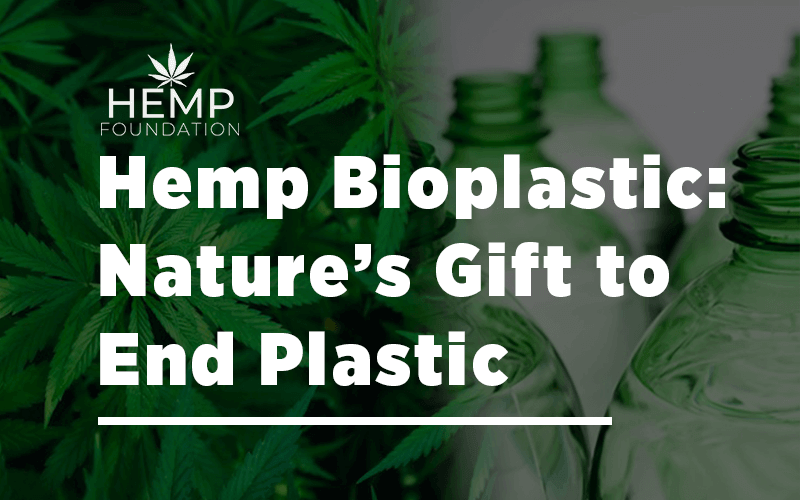[vc_row][vc_column][vc_column_text]Few inventions have affected human lives as much as synthetic plastics have. No doubt this ubiquitous material is making our lives easier. Unfortunately, this convenience comes at a heavy cost.
You are well aware of the pollution caused by synthetic plastics. We owe it to our children to leave this world a liveable place, don’t we?
It is therefore imperative that we find a replacement for this harmful material. Of course, there are several alternatives to plastic that exist. However, when we examine them they are not as multi-faceted or as convenient as plastic is.[/vc_column_text][tm_image align=”center” md_align=”center” image=”11027″][/vc_column][/vc_row][vc_row][vc_column][vc_column_text]
Why Do We Need an Alternative Form of Plastic?
The plastic helps us stay protected from contaminants. It preserves food and increases its shelf life, protecting it from pests and humidity.
All this, while being lightweight and versatile – advantages the other alternatives do not offer. Would you then agree that while plastic waste is bad, plastic by itself is not?
What if we can get all the benefits of plastics without causing pollution? Yes, it is possible… Welcome to the world of bioplastics![/vc_column_text][/vc_column][/vc_row][vc_row][vc_column][vc_column_text]
What is Bioplastic?
Bioplastic is a biodegradable material obtained from renewable sources. Studies have shown that they can reduce carbon emissions by 30 to 80%. Since not all bioplastics are biodegradable, the challenge is to identify the ones that are.
Bioplastics made from plant cellulose, starch waste from corn and potato are completely biodegradable. Bioplastics are already being widely used in industries such as textiles and medicine. They are especially useful in the container and packaging solutions.
While in hemp bioplastic, you will be surprised to know that there is a source that is thousands of years old that presents itself as an excellent choice. It is a plant that is widely seen. Hemp.[/vc_column_text][tm_image align=”center” md_align=”center” image=”11051″][/vc_column][/vc_row][vc_row][vc_column][vc_column_text]
All About Hemp Based Bioplastic
The hemp plant helps us create environment-friendly plastic. Hemp bioplastic could well be the way of the future.
The use of cellulose from plant fiber was common before the invention of synthetic polymers. We just need to go back to the good old method, with a little help from the wonder plant called hemp.
Let us try and find out why hemp plastic is such a compelling proposition.
For starters, hemp is biodegradable and sustainable, immediately overcoming two strong objections to synthetic plastic. Please note, however, that hemp bioplastics do not degrade on their own but need enablement by industrial composters.
Hemp has about 65 to 70% cellulose which makes it a good choice for plastic production.
The single most negative point about synthetic plastic seems to be that it does not degrade. On the other hand, hemp fiber helps us get a biodegradable substitute.
What makes hemp sustainable? Here are some reasons:
- The hemp plant helps conserve water. It needs 50% less water for cultivation than cotton.
- Farmers use hemp as an in-between plant and thus it helps conserve the topsoil.
- The hemp plant is insect-resistant and is pesticide-free. It can be grown organically.
Hemp is an excellent raw material for plastic. When you look for an ideal choice for making plastic, you want something having high concentrations of cellulose. Hemp fits the bill perfectly.
Safe: The manufacturing process does not create hazardous compounds like toluene and benzene.
Lower energy requirement: The energy required to produce hemp plastic is up to 45% less than traditional plastic.
Hemp plastic is also stronger. After 12 years of research, Henry Ford created a car in 1941 using hemp and demonstrated that it was 10 times stronger than its steel counterpart. Other than the tubular welded frame, the car had no steel at all. As a bonus, the car was powered by hemp-based biofuel! This video will give you a quick idea.
Is there a downside to hemp plastic? Yes, it is more expensive than conventional plastic. This is because subsidies keep fossil fuel costs at a lower level.
Now, isn’t it a small price we can pay in the interest of future generations?[/vc_column_text][/vc_column][/vc_row][vc_row][vc_column][vc_column_text]
Challenges & Way Forward
Governments around the world are removing or relaxing the ban on industrial hemp. People are also slowly becoming aware of the ills of synthetic plastic and the need to do away with it. Besides, people have gotten used to the convenience of synthetic plastics and it will take some time before they change completely.
The technology for making bioplastics is expensive. In fact, hemp is even more expensive than bioplastic made from soy and corn, both of which are heavily subsidized in the US. And people do not want to pay much more for sustainable solutions than they do for conventional plastics.
What about the manufacturers? Some corporations are spending millions searching for ways to replace PET that is being widely used in plastic bottles. While experts hope to see 100% hemp-based bottles in warehouses, it seems that the required technology will take some time coming.
Coca-cola has experimented with bottles made only from plant sources. The makers of LEGO building blocks are on a mission to do away with fossil-based resins by 2030 by switching over to sustainable materials. The high cost of the production of hemp plastic is a limiting factor. It can only be overcome by increasing the scale of production.
With a little more effort from these stakeholders, we can expect to see a world that is free from synthetic plastics.
Future generations will thank them for that![/vc_column_text][/vc_column][/vc_row]

